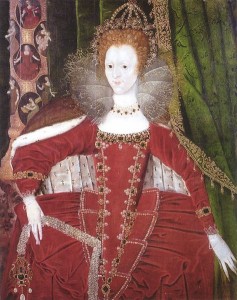 On this day in 1533, at 3 o’clock in the afternoon, Queen Anne Boleyn gave birth to a daughter, the future Elizabeth I, at Greenwich Palace. We don’t know the details of Elizabeth’s birth, only the time, the place and the fact that she was named after her paternal grandmother, Elizabeth of York, and possibly also her maternal grandmother, Elizabeth Howard. The little girl had her father’s red hair and long nose, and her mother’s dark eyes.
On this day in 1533, at 3 o’clock in the afternoon, Queen Anne Boleyn gave birth to a daughter, the future Elizabeth I, at Greenwich Palace. We don’t know the details of Elizabeth’s birth, only the time, the place and the fact that she was named after her paternal grandmother, Elizabeth of York, and possibly also her maternal grandmother, Elizabeth Howard. The little girl had her father’s red hair and long nose, and her mother’s dark eyes.
The birth appears to have been straightforward, the baby was healthy and so was Anne, but the baby was a girl and not the predicted son and heir. So sure were Henry and Anne that the baby would be a prince that a celebratory tournament had been organised and a letter announcing the birth of a prince had been written. The joust was cancelled and the word “prince” had an “s” added in the birth announcement letter, but it is easy to read too much into the cancellation of the festivities. As Eric Ives points out, the celebratory jousts were cancelled in 1516 too, when Catherine of Aragon gave birth to Mary, and it was traditional for the celebrations of the birth of a princess to be low-key. Although the joust was cancelled, Ives writes that “a herald immediately proclaimed this first of Henry’s ‘legitimate’ children, while the choristers of the Chapel Royal sang the Te Deum” and preparations were already underway for a lavish christening.
Elizabeth became Queen Elizabeth I on 17th November 1558, following the death of her half-sister, Mary I. She ruled for over 44 years and her reign is known as “The Golden Age”. You can read about her achievements in my article “Elizabeth I’s Main Achievements”.